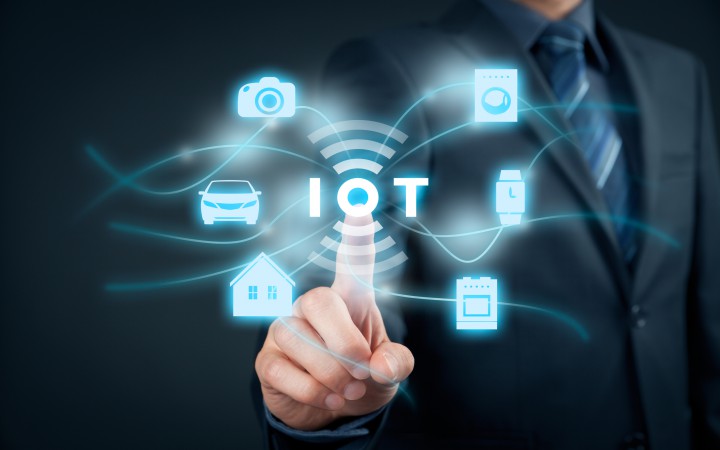Today’s Wonder of the Day was inspired by b from CO. b Wonders, “How do sensors work in the internet of things?” Thanks for WONDERing with us, b!
Picture it: It’s the year 3000. Planet Earth is a desolate wasteland. You’re roaming through what used to be a major city, looking for food, when suddenly, you hear it. The whir-whir-whirrrrr of wheels warns you one of them is coming. You dart behind a dumpster just in time. Peeking around the corner, you watch as one of mankind’s robot overlords disappears down the alley. You heave a sigh of relief. Life has been hard since machines took over the world.
Science fiction has imagined this future for decades. But luckily, no technological advances have resulted in a world ruled by robots—yet. Still, machines seem to be getting smarter all the time. Today, many devices even communicate with each other over the Internet, both with and without human control. These devices make up a web-like community called the Internet of Things (IoT).
Have you ever heard of the IoT? It’s a term that’s being used more and more often lately. But what does it actually mean? Basically, any device with an on/off switch that connects to the Internet is part of the IoT. In many cases, these devices share data with each other.
Based on that definition, what items might be part of the IoT? Look around you. Are any devices in your home or classroom part of the IoT? Their prevalence might surprise you. Your friend’s smartphone? Your teacher’s Fitbit? How about those smart headphones you want for your birthday? These are all part of the IoT.
By sharing data, devices on the IoT work together to make some parts of life easier. For example, consider the devices in a smart home. There might be a smart thermostat, smart speaker, and a smart oven. Now, picture a person walking home with a smartphone in their pocket. That smartphone is connected to the IoT—and all the devices in the smart home. If the smartphone’s GPS knows the person will be home soon, it can send that information to the other IoT devices. The thermostat can adjust to the person’s preferred temperature. The smart speaker can play their favorite album. The smart oven can heat up for their favorite after-school snack. All these things are done before the person walks through the door—and without them lifting a finger.
But that’s not all! What about a restaurant with a smart refrigerator? When it notices it’s low on important ingredients, it can order more, all on its own. A smart coffeemaker? It can sync up with a smartphone’s alarm to know when to brew coffee. A smart car? It can identify problems and send data straight to a mechanic, ensuring they’ll have the parts needed for a speedier fix.
Exactly how big is the IoT? In 2020, it’s estimated that about 34 billion devices will be connected. Just think of all the ways those devices can work together to make life easier! But of course, there are drawbacks. With the threat of hackers stealing data from devices in homes, cars, and businesses, security is now more important than ever.
It’s unlikely that the IoT will take over the world—we hope. How often do you use the IoT? Are there any other ways you think it could make life easier?
Standards: CCRA.L.3, CCRA.L.6, CCRA.R.4, CCRA.R.1, CCRA.R.2, CCRA.W.2, CCRA.L.1, CCRA.L.2, CCRA.R.10, CCRA.W.4, NCAS.A.1, NGSS.PS4.C




